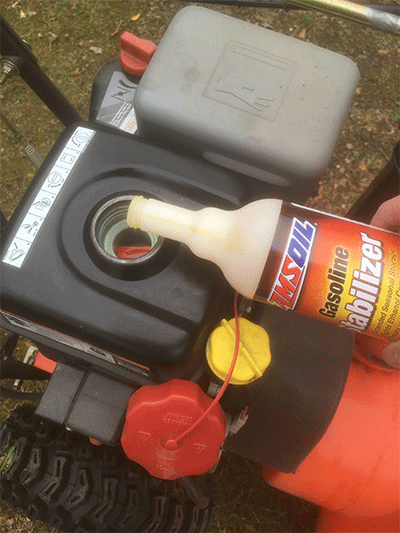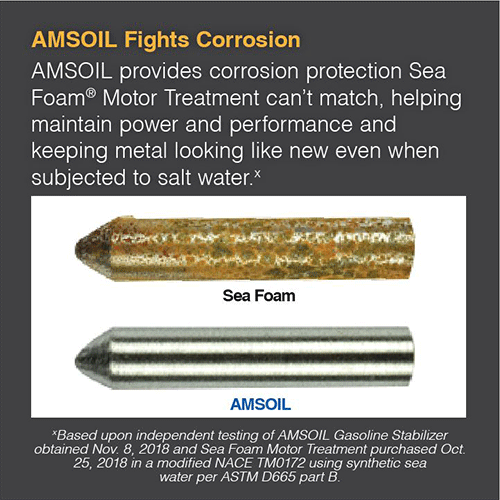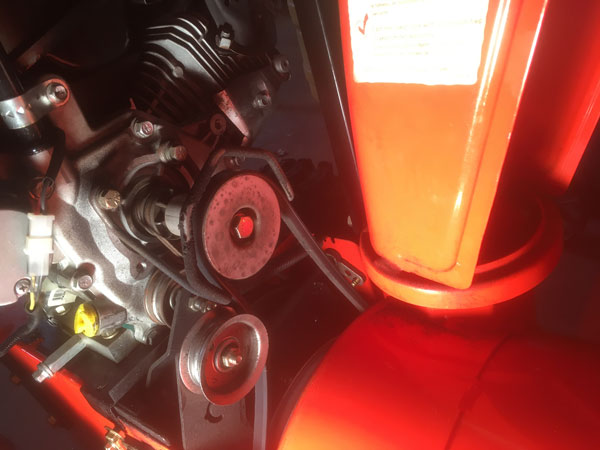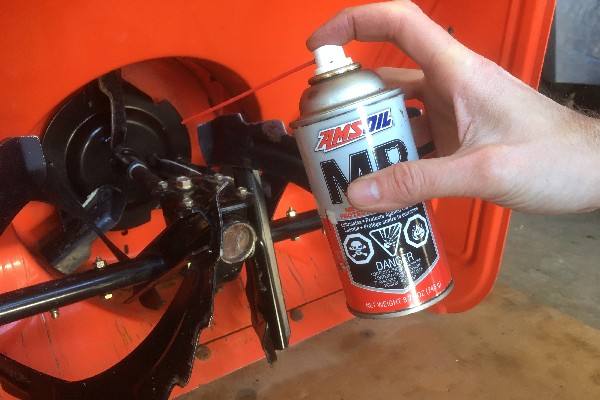How to Store your Snowblower properly. Prevent damage during summer season.
Storing a snowblower properly is vital to ensuring it fires up when the snow eventually returns. When the first storm of the season dumps eight inches of snow on your driveway, you don’t want to be messing around in the garage when your snowblower won’t start.
Time needed: 30 minutes.
Step-by-step: How to store a snowblower
- Stabilize the gas
This is the most critical step to ensuring the snowblower starts right away in the winter.
Gasoline begins to break down in as few as 30 days. Varnish and gums begin to form, which clog the tiny fuel passages in the carburetor. I can tell you from experience that it doesn’t take much to clog a snowblower carburetor and prevent it from starting.
AMSOIL Gasoline Stabilizer keeps fuel fresh up to 12 months. As the image shows, it also does a great job fighting corrosion to keep metal fuel tanks and other components clean and working properly. After adding stabilizer, run the engine for a minute or two to distribute treated gas throughout the fuel system.
- Change the oil
Running the engine to distribute gas stabilizer has the added benefit of warming the oil so it flows more easily.
Changing oil before you store your snowblower removes acids and other combustion by-products so they’re not sitting in the engine throughout the summer. Plus, the engine will be ready with fresh oil come winter.
Don’t cheap out on oil – you likely spent upward of $1,000 on your snowblower, so you want it to last. Plus, small engines are tougher on oil than most people think. They’re air-cooled, meaning they run hotter than automotive engines, typically don’t include an oil filter, further stressing the oil, and are often neglected.
AMSOIL Synthetic Small-Engine Oil is a commercial-grade formulation that fights wear and deposits in the toughest conditions. It also flows readily in the cold for maximum start-up protection.
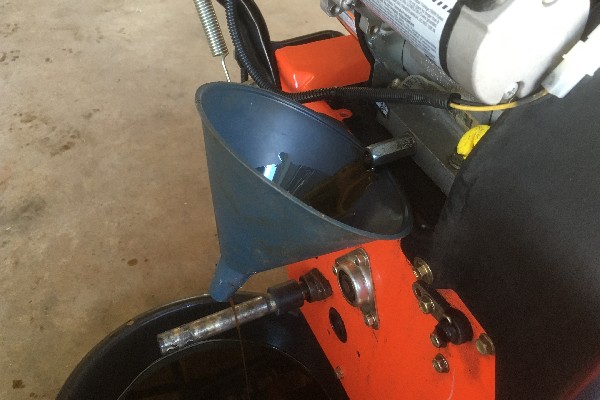
- Fog the engine
Simply remove the spark plug and apply fogging oil. It coats the cylinder wall and piston with oil to help prevent corrosion from forming during the summer. If corrosion forms, it flakes off into the oil and scours the bearings and other components, causing wear.
- Check the gear lube
Remove the gearbox fill bolt and ensure the housing contains sufficient oil. Check your owner’s manual for the proper lubricant.
- Inspect the belts
Now’s the time to check drive belts for cracks or abrasions. Replace them if needed.
Otherwise, I promise you they’ll break at the worst time, like at 5:30 a.m. on a cold November morning after a wet, heavy snowfall. Be proactive and save yourself a ton of grief down the road.
- Check the linkages, auger housing and other areas
Before you store a snowblower, look it over from top to bottom. Check for damaged parts and linkages. Lubricate pivot points with a spray protectant, like AMSOIL MP. Spray the auger housing to guard against rust formation over the summer.
Don’t overlook this step. While examining my snowblower last year, I realized three of the four bolts that hold the auger housing and chute (sometimes called the “bucket”) to the chassis had sheared. One bolt was literally holding the snowblower together.
The following Thanksgiving weekend, two feet of snow blanketed Duluth, Minn. I spent eight hours moving snow. Imagine if I hadn’t repaired the snowblower the prior spring and that last bolt had given out halfway down my driveway?
Again, be proactive now to avoid a ton of problems later.
- Store the snowblower inside
Finally, park your snowblower in the back of the garage or in a shed for the summer to protect it against rain. If you have no choice but to store it outside, cover it securely. I bought a nice cover at Kmart a few years ago and it still does the job.
Following these steps will help ensure your snowblower is ready to go the next winter.


